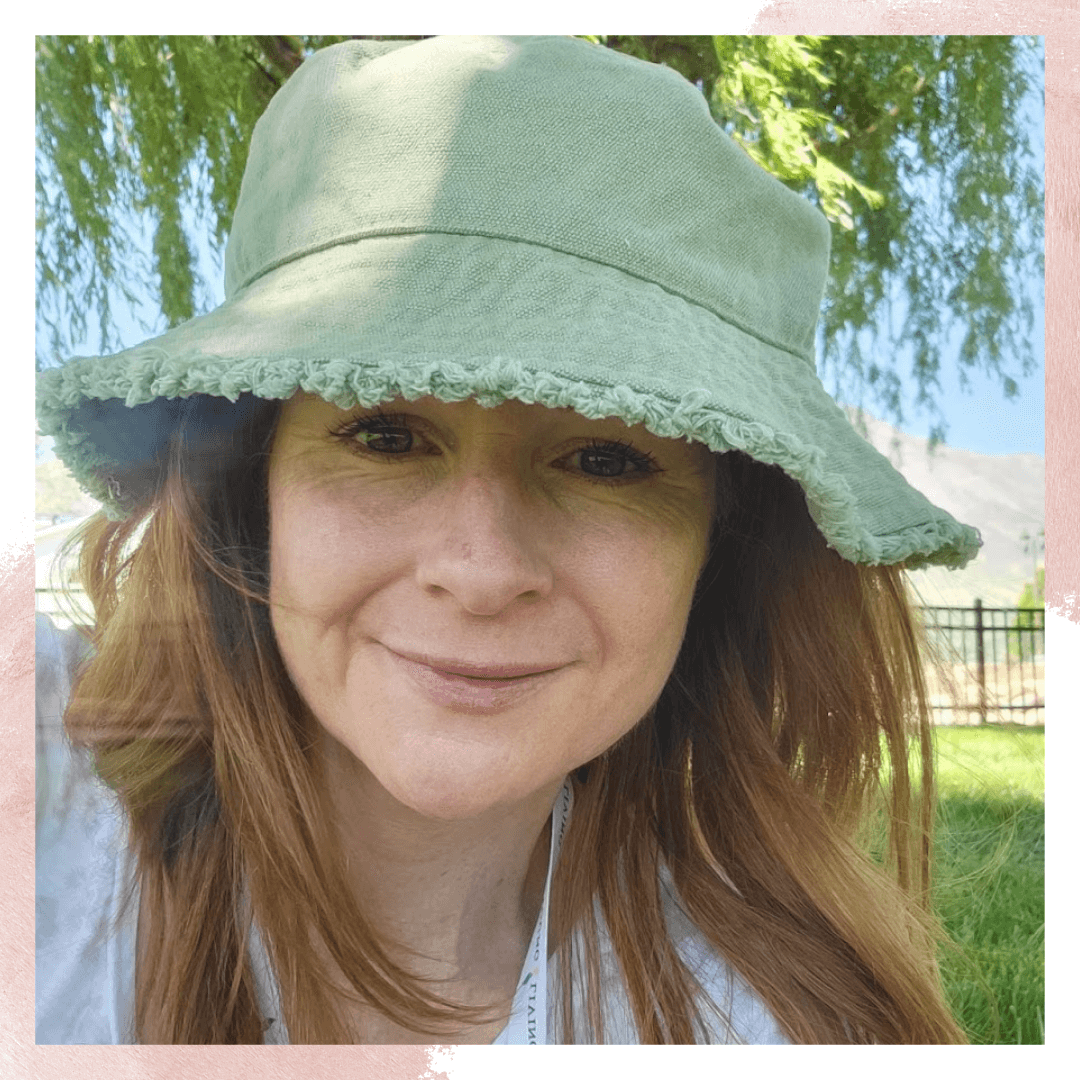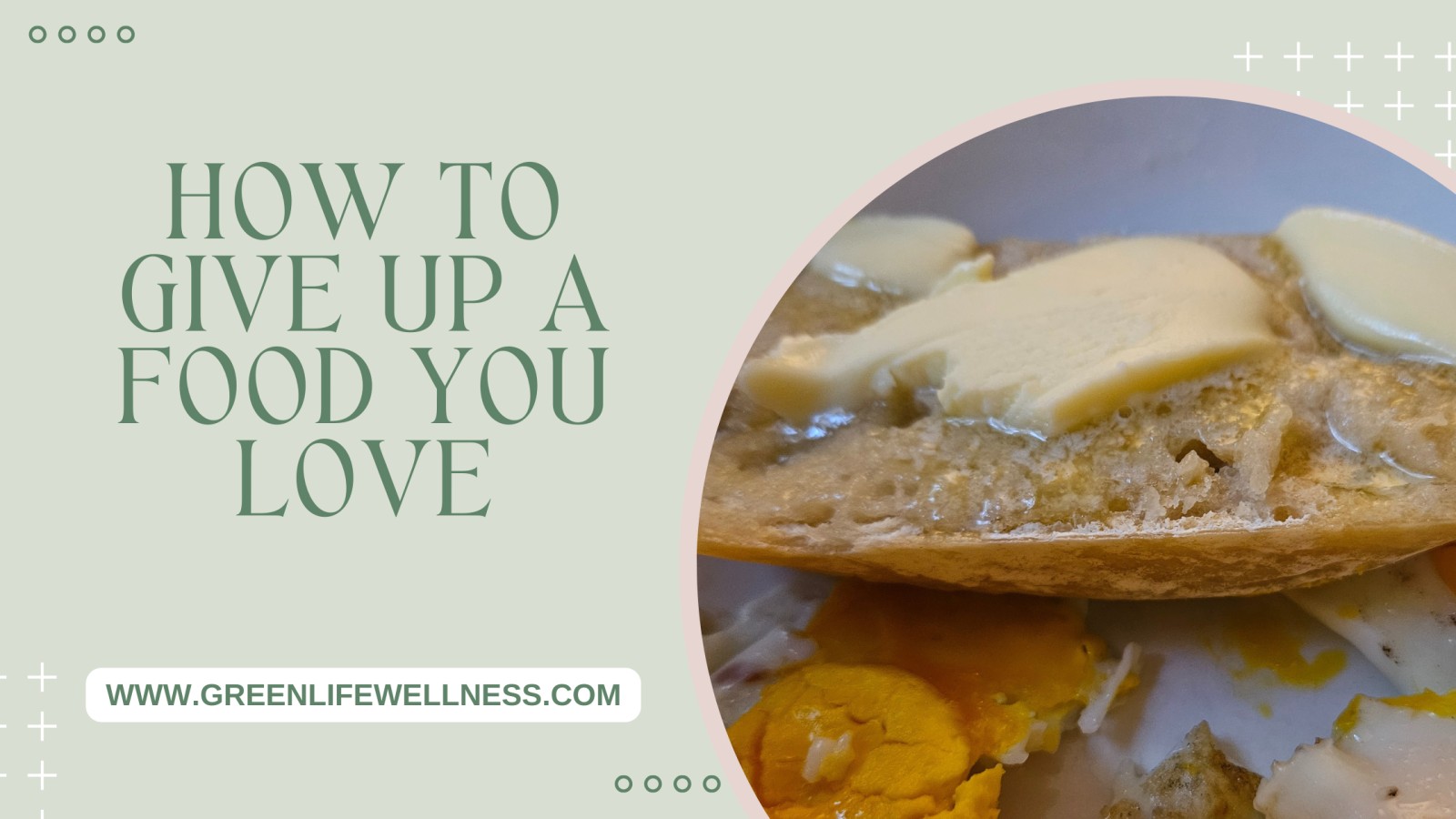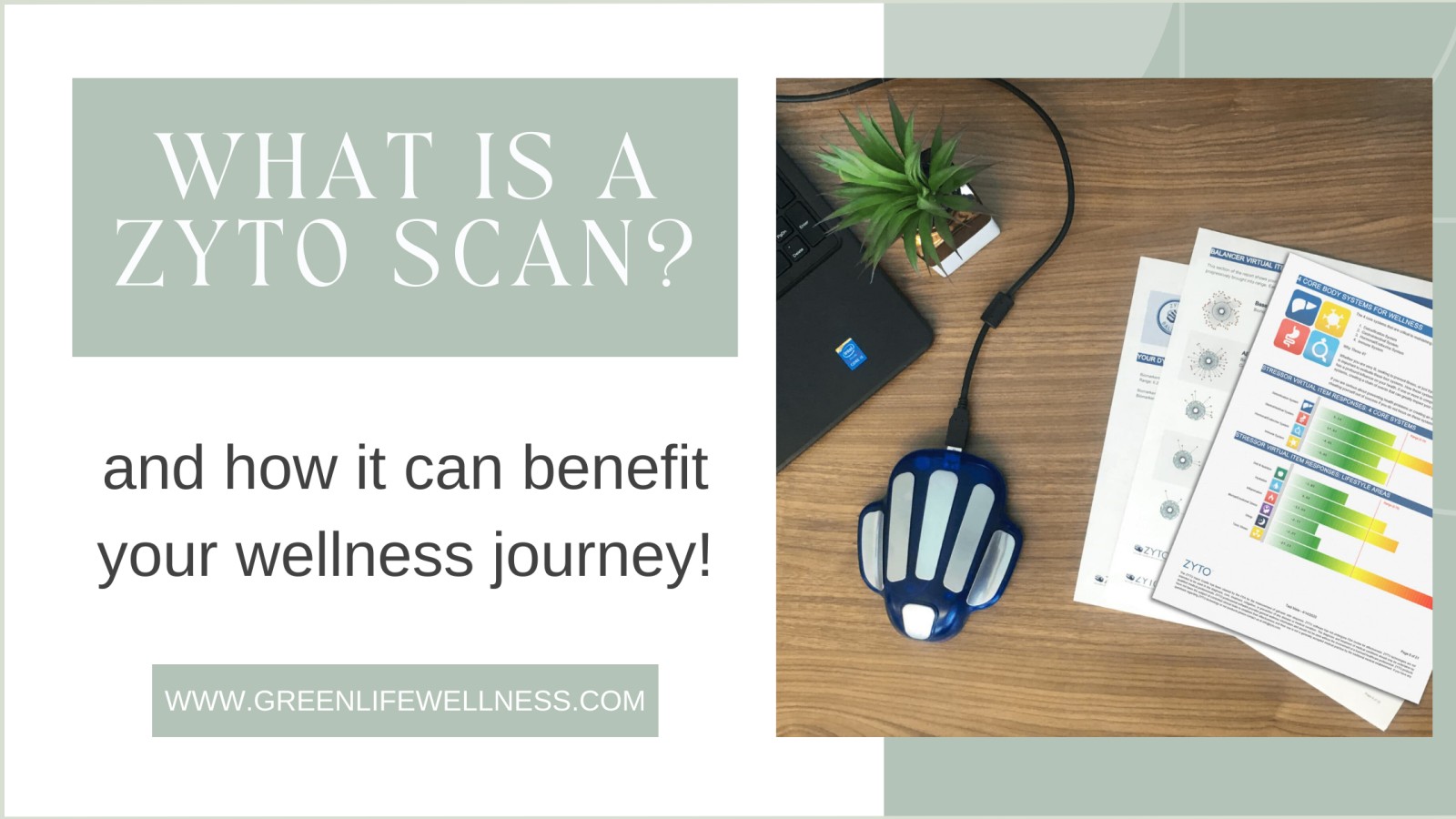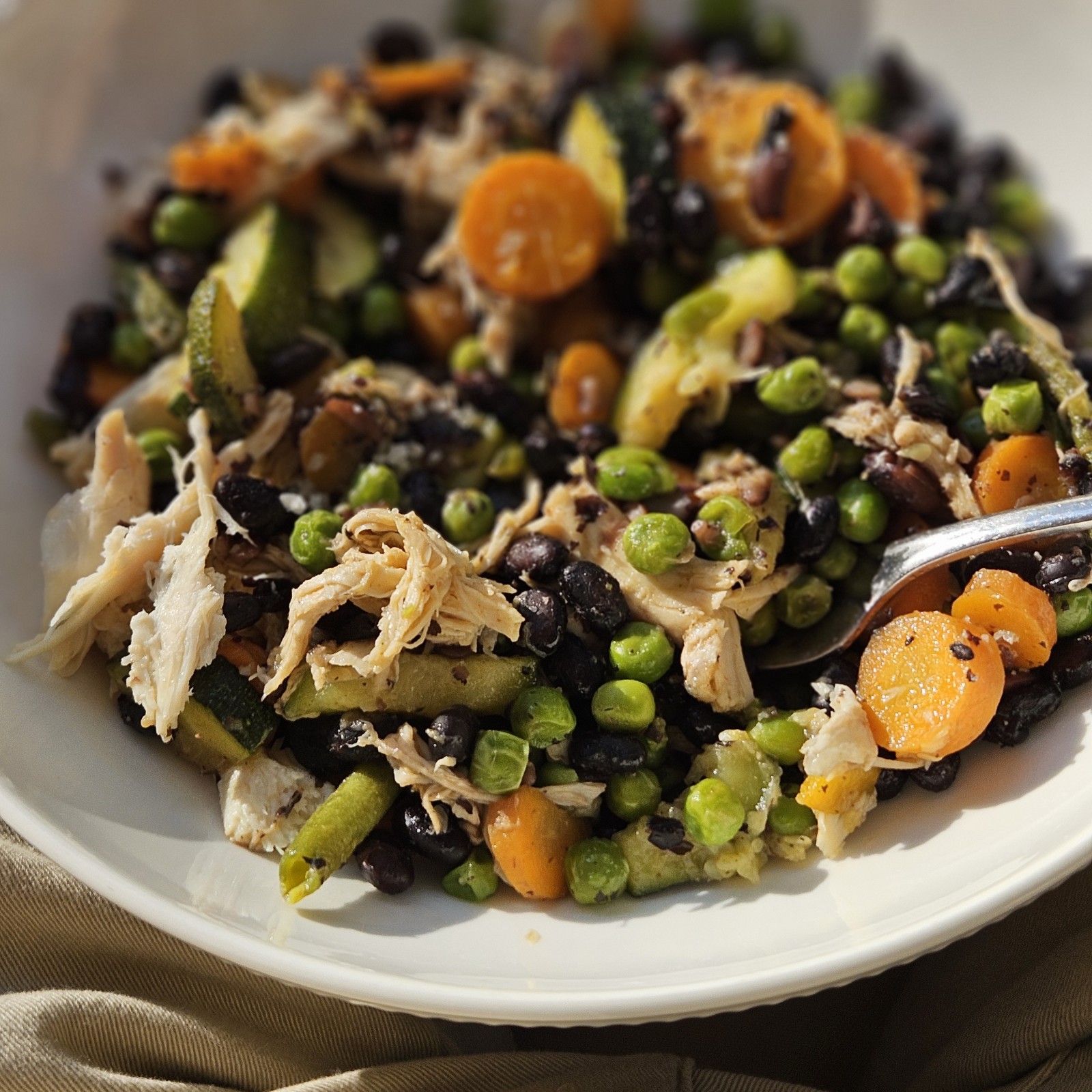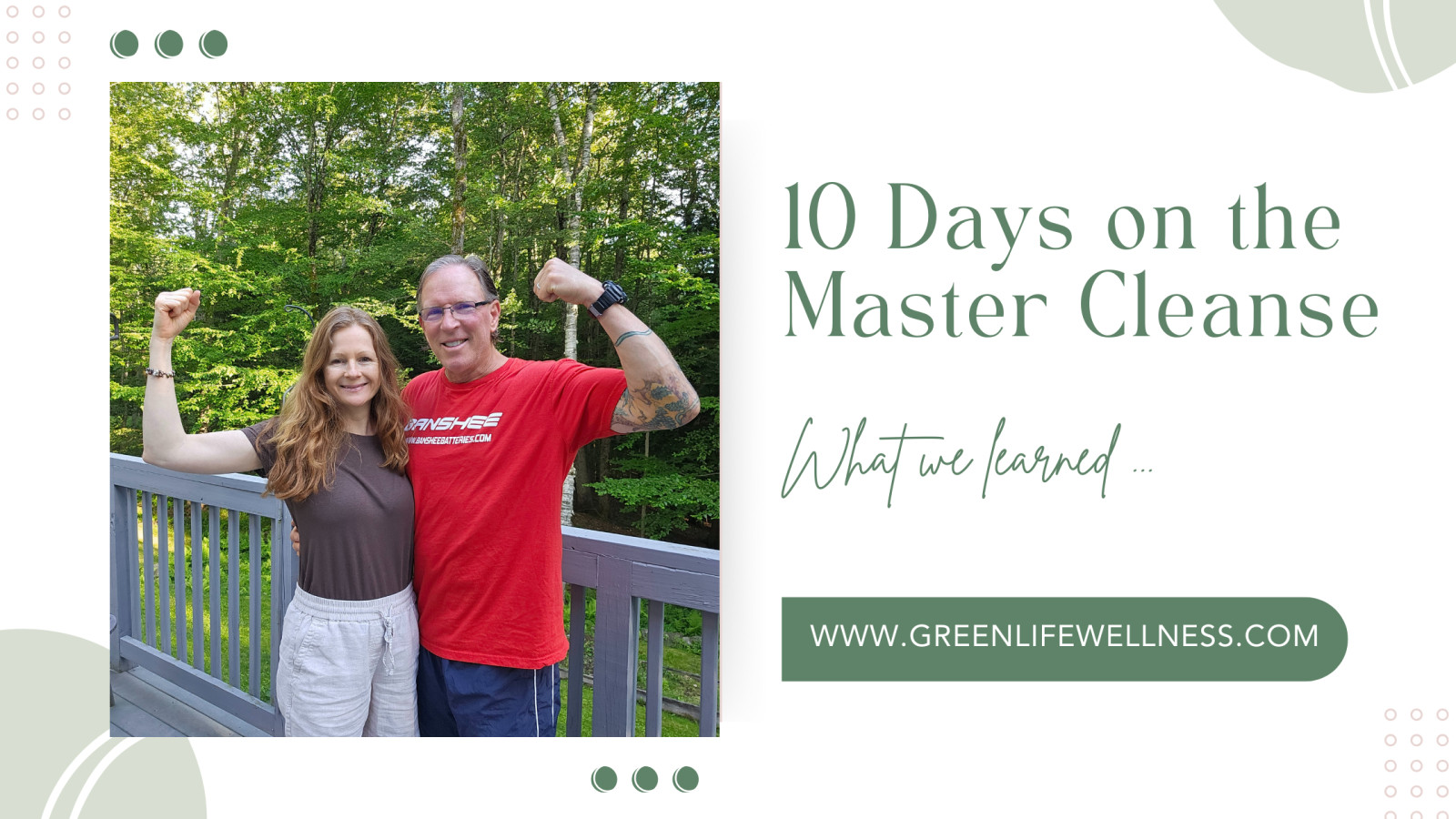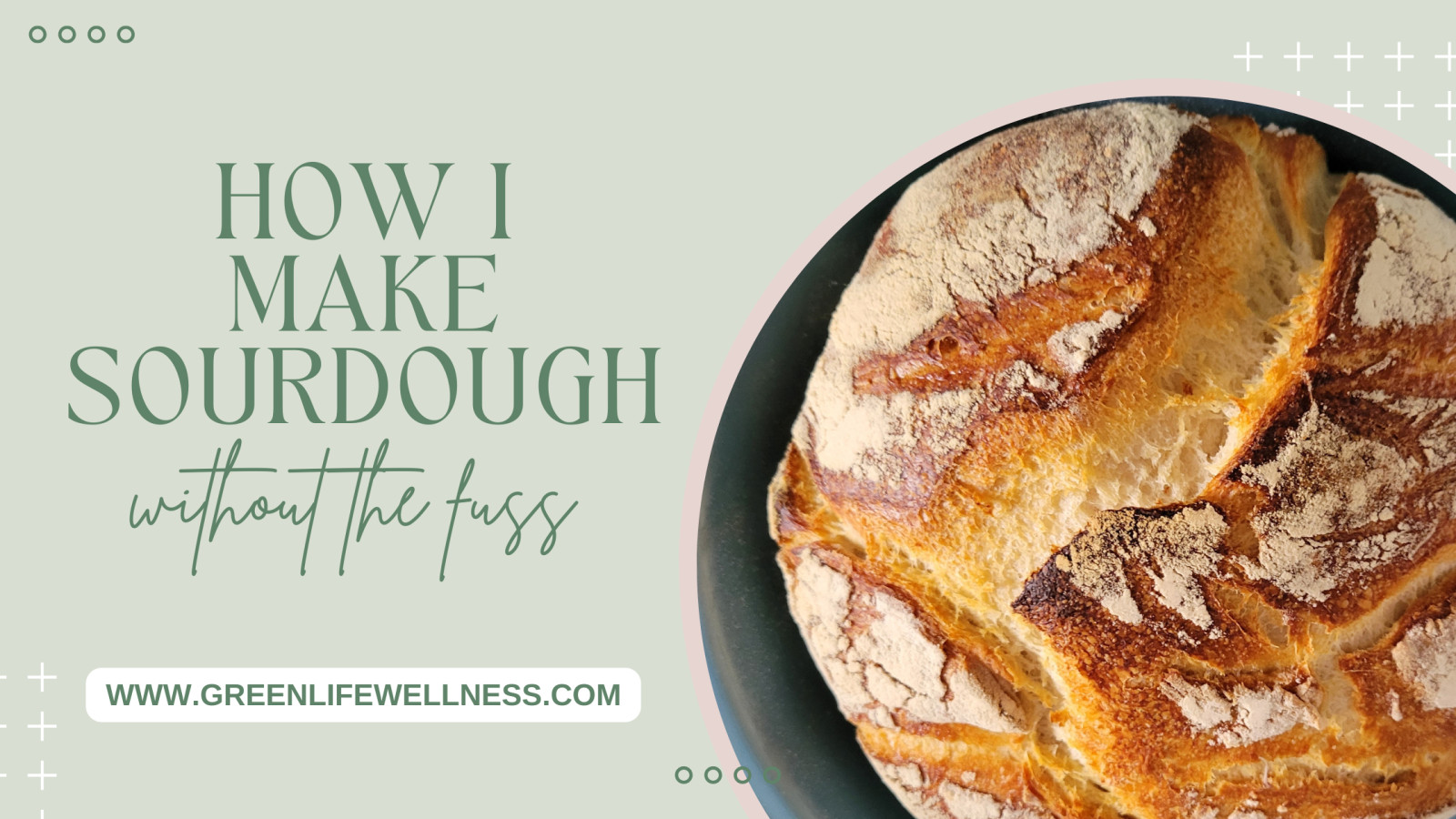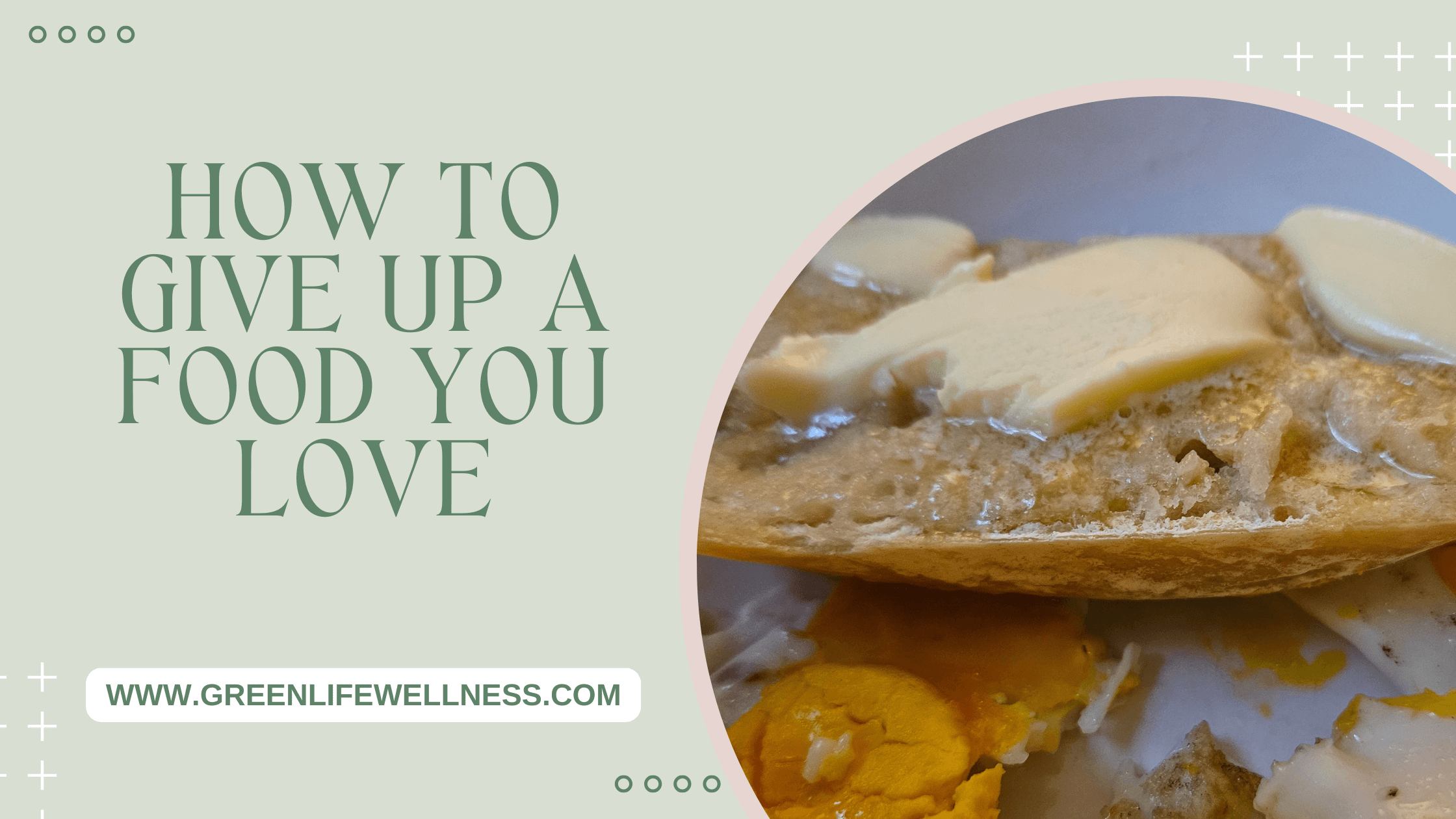
And not fail like I did...
I just tried giving up my homemade sourdough bread for 14 days and I failed miserably.
I’ll spare you the long story of my love-hate relationship with bread but let’s just say that as a recovering sugar addict, bread can easily fit the bill for someone who has a history of craving carbs. It may not be a brownie but it’s close enough!
I’ve been off regular bread for over 20 years - having identified a gluten sensitivity and experiencing just how amazing life and health could be for me without it. But the recent sourdough craze got me wondering and then living the dream of having bread again. For me, a piece of homemade sourdough bread with farm fresh butter is like cake. I love it.
And while there are so many great things about sourdough, especially the one I make with non gmo, unfortified flour, for me there are also many drawbacks:
- I can’t eat just one piece - ie it kicks up that addictive tendency in me
- It takes the place of more nutritious foods by filling me up
- It seems to impact my hormones because I only get hot flashes when I’m eating sourdough
- It makes me feel like a failure when I can’t control how much of it I eat
So I decided to give it up.
Why I thought I could do it
Now, when I’m working with clients after discovering they have IgG Food Sensitivities I’m reminded of how hard it can be to give up something you love, but somehow I thought this would be easy since I’ve given up so many foods over the years: first it was gluten, then dairy due to IgG reactions, then sugar, then almond butter, then coffee, then almond milk, then onions. Some were dropped cold turkey and some required a different approach…an approach that might work for you.
And by the way, the more pain or the bigger the health issue related to the food you love - the easier it will be to give it up. That seems logical right? Gluten and dairy were super easy for me because I had so many painful or obvious symptoms that I wanted to get rid of. Sugar took a while, because I was 100% addicted to it and because I first had to balance my brain chemistry with amino acids (from protein) and learn how to deal with life stress without wine or brownies. And things like coffee - well that one needed a totally different approach altogether.
In fact, if you come to my home right now you will see that I do have decaf coffee in my freezer. That’s because every now and then I like to have a cup. Years ago I had coffee everyday - because it was fun, creamy and something to do. I liked making the cup and bringing it to my desk like it was my work buddy. But then I noticed I wasn’t drinking enough water on those days, and my teeth were getting stained and even decaf still seemed to mess with my sleep. So I started negotiating with myself…ok let’s be honest.. I started arguing with myself. HAHAHA. I started with suggesting I have it 3 days a week, then 2 days a week … then hanging my head low I resigned to one day a week. I definitely tripped up here and there in those early days with weeks of drinking it everyday again but having a goal that wasn’t O days made me feel like I was working toward something that was possible. I didn’t feel total deprivation, and that’s important because saying NEVER or NONE can definitely trigger me and start that deprivation mindset.
How Your Mindset Matters
If you are feeling down and defeated because you can’t have your coffee, it’s like a pity party going on inside you everyday. Eventually you are going to feel sorry enough for yourself that you will convince yourself you DESERVE it. Am I right? But if you look at the problem strategically and come up with a solution for the time being - you are making a controlled decision in a non emotional state. If you decide 1 day week then you can look forward to that 1 day a week and relish the cup of coffee on that day. You also won’t feel AS sorry for yourself.
Here I am years later, I can go 3-4 weeks without having coffee and I don’t even realize it. I now call it my “monthly cup of coffee”. I don’t miss it and I feel better without it. Win Win.
A better approach if you have IgG reactions
This negotiation approach doesn’t work with a true food sensitivity though, where the immune system is attacking the food. In that case every time you have the food you can be doing damage to your intestinal lining and creating symptoms (outward or inward). But if you are trying to come off coffee, or in my case Sourdough – this approach might work.
If you have a food that you know is not great for your body - either because you just had IgG testing done or because you notice the symptoms your body produces after having it - take some time to really look at the issue. Can you identify why you love the food in the first place? Does it satisfy a craving? Does it bring back positive memories of childhood or a loved one you used to enjoy that food with (ice cream is a biggie here). What does it DO for you? Does it calm you, give you energy, make you “happy”, distract you from life?
And then decide if you can get the same results without a food at all. Can you address your cravings at their root - which is likely blood sugar or protein related? Can you enjoy time with a loved one or recall fond memories without using food? Can you walk with them, play cards or do something fun without the “treats”?
Not easy but definitely worth it
It may seem depressing to give up a food you love but it’s actually what I call Food Freedom. It’s empowering to realize that you have the ability to choose what you eat or drink without feeling powerless. And when you feel healthier, release weight, improve your mood or have your own natural energy it is so worth it. I would never want to go back to feeling the way I did when I was eating pretzels and cheese or drinking coffee everyday. Yuck - no way!
Now granted, if you do all this work and still CHOOSE to have whatever is causing your symptoms - that is totally your right - it’s your body. But if you are like me and you would rather feel your best than eat any single thing - no matter how warm or soft or sourdoughy it is .. I just want you to know there are ways to win at this.
I’m starting the one day a week plan with the hope of seeing my sourdough obsession follow the same path that my coffee drinking did.
What approach are you going to take?

Have you heard someone suggest 80/20 when it comes to food or healthy eating? Or maybe it was phrased as “All Things in Moderation” that came in the form of seemingly sound advice. If you’ve heard that, I can tell you one thing - you didn’t hear it from me.
I don’t subscribe to any of that talk. Here’s why: would you say 80/20 is a great plan for an alcoholic? Just don’t drink 80 percent of the time and the other 20% go ahead and binge on alcohol. How would that work out? Or would you tell an obese person who wants to lose weight to just eat All Things in Moderation? Perhaps one pan of brownies might seem like moderation to them. How would they know? Who would judge what moderation looks like for someone who is used to eating a lot? And what about the person with a food allergy or sensitivity? Should they just suck it up 20% of the time, use their epi pen or deal with the repercussions of their food reaction so as to not be too “extreme”.
The 80/20 rule and All Things In Moderation are nothing more than sound bites that seem rational. But in reality they are lies intended to coerce and deceive you. Even worse, they vilify the valiant efforts of those who are actually doing their best to avoid things like alcohol or sugar or foods that harm them. It makes us the weirdos. And it makes all things permissible. It’s like the alcoholic’s buddy who says “oh come on, surely you can have just one drink”. Using those sound bites with someone working hard on their health is like being the devil on their shoulder. They start to question themselves, wonder why they can’t be like “everyone else” who can eat the sugar, gluten, etc. For a moment they forget how bad they will feel or how much their health has improved.
No, I’m sorry .. but it’s not rational to eat or drink all things in moderation if your immune system will react to certain foods or if you are someone with a food addiction or if they are simply NOT GOOD FOODS. We should be encouraging our friends to eat well and not enticing them to eat sugar with us if they are trying not to.
That’s where I come in - the recovering sugar addict turned sugar nazi. I’ve lived without sugar for almost 20 years and for a lot of people that’s EXTREME. They want to tell me to loosen up, have a little cake, live a little. And I get it. For them, life without sugar feels sad, deprived .. ha even depraved. But for me, life without sugar is steady, peaceful, smooth. I gave up sugar because I connected the dots and saw what it did to my mood and how I treated my kids after eating it. I would get super fun (high) and then I would get super crabby (low). It acted just like a drug in my body, not to mention how it disrupted my gut microbiome and immune health.
So yeah, I gave it up - totally. And you know what happened? I survived, in fact I thrived, my health soared, my energy skyrocketed and best of all I became more patient, calm and connected to my kids. That was and is 100% worth not having the birthday cake.
Not everyone is as sensitive to sugar as I am, but “All Things in Moderation” is the sound bite that deceives people into thinking it’s ok to have some junk in their diet or to treat themselves with some indulgence - to not be too rigid or restrictive. It’s the call to be "normal" or go with the flow. But friends, God doesn’t tell us to go with the flow or take the path that everyone else is taking, does He?
My sound bite is “play it to the end”. Ask yourself what happens AFTER I eat that food, drink that drink? Does it cause more cravings? Does it zap my energy? Does it make me feel sick, gross, bloated, hyper? And then ask yourself, is eating this thing really serving me well - is it raising my vibration as a human being or lowering it? Do I get tired or grumpy after I have it .. or later that night? Do I argue with my spouse or kids more after a night out? Do I get the important things done, and done well? Most importantly .. did eating that food or drinking that drink do ONE truly positive thing for me?
Just become more aware - pay attention to how things effect you so you can decide for yourself whether it’s something that belongs in your life or not. And then once you make that decision - be strong in it - and not just 80% of the time. Is it easy? No sir. But it gets easier with time. And remember, you can do all things through God who strengthens you. I know I couldn't do what I do on my own strength.
Being different may scare you - you may want to be part of the “cake eating clan” but just make sure you are making the choice 100% consciously. My only reason for sharing this is to let you know that it’s possible to feel amazing, have a clear head and a peaceful feeling inside but you may have to do hard things - like giving up certain foods that you think you love or a lifestyle that you are used to. You may have to become someone with resolve - who isn't easily swayed or coerced and who can see how long term benefits overpower short term pleasures.
I believe that God led me on this path to show me where my joy really comes from --and it's not food. I thank Him for showing me the way to get free of sugar and for giving me a chance for a very different way of life.
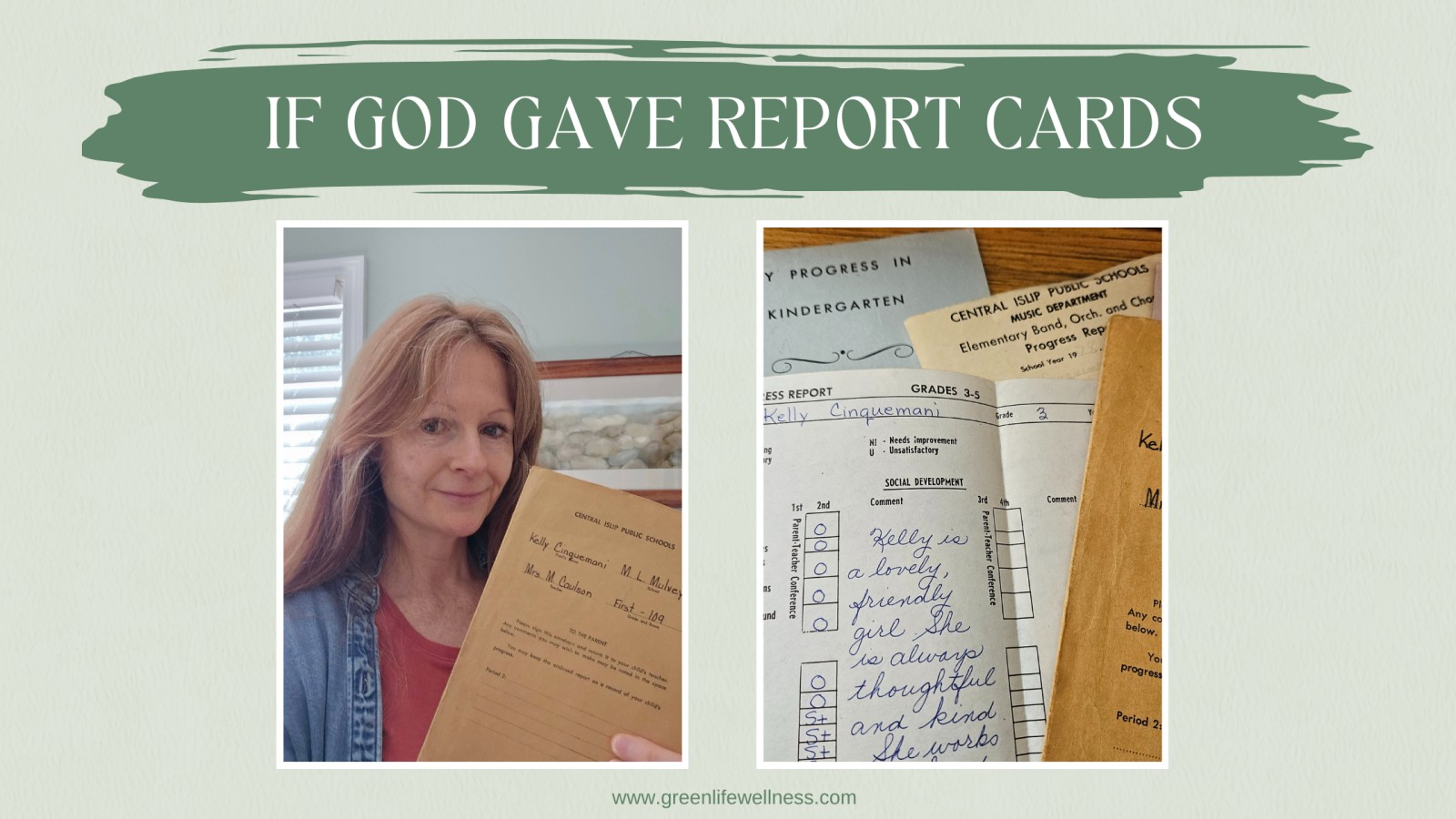
I found some of my elementary school report cards today while cleaning. That was definitely a squirrel in my plan to not get distracted!
The last time I looked at these was when my Mom passed and we were clearing out her home. Back then I only looked at the grades which were just S for satisfactory, S+ for a little better than satisfactory and O for outstanding. I remember thinking that I hadn't gotten as many Os as I had wished. Lol.
This time I read the teacher's comments, even the faded ones that were barely legible. I could see the kindness and care they took to be encouraging and to sprinkle in compliments wherever they could. The word delightful made me smile. But a few of their notes hit me me hard:
- Kelly wants so badly to do her best..
- Kelly tries very hard
- Kelly could use more self esteem about her abilities
- Kelly often needs reassurance that she is doing things right
Gah!! That was all written about 5-9 year old me. I was already striving, trying desperately to not be inadequate or disappoint others or maybe to live up to the example of my 4 older smarty pants sisters.
It's so sad to me that my silly, sweet little self was so focused on grades that she didn't realize her true gifts. By most standards I was pretty smart but all I did was compare myself to the smarter kids in class or to my siblings. I often felt like I didn’t belong with the “smart kids”.
Now.. in this moment I know that God is trying to show me something wonderful in having me find these report cards…the day after attending a Christian Women's group where I journaled about not wanting to define my worth by what I do, or how much I make or how many people want my health advice.
I think God is telling me that the only Ss and Os that really matter are the ones that come from Him.
So how am I doing with His assignments? How well am I loving? How fully am I following? How closely am I abiding?
I wonder what kind of encouraging but truthful comments He would write if He had to give me a report card.  I'm half afraid but also really want to know!
I'm half afraid but also really want to know!
When was your last parent/teacher conference with your creator?  I think I'm due for one!
I think I'm due for one!
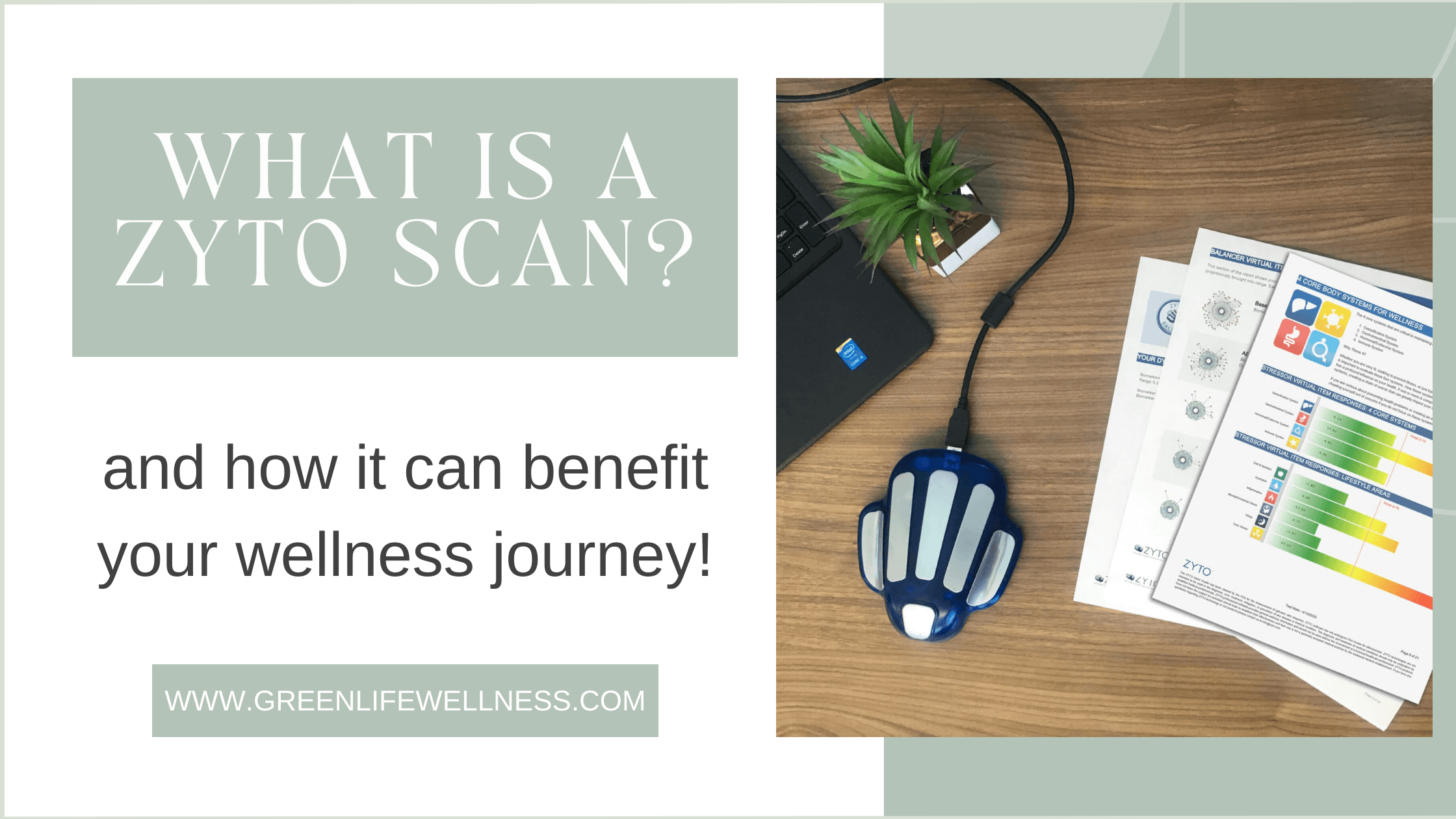
When it comes to health and wellness, a one-size-fits-all approach rarely works. Each of us has unique needs based on our body’s chemistry, lifestyle, and stressors. That’s why I offer Zyto scans as part of my practice—they provide personalized insights that help me guide my clients toward the most effective supplements, modalities, and lifestyle changes.
Read more...
Lately, I’ve been doing a lot of Visera scans for clients—and the more I use this tool, the more I realize how powerful it is. People often come to me feeling confused or frustrated about their health. They’ve tried different supplements, attempted to lower their toxin exposure, or added new wellness routines, but still aren’t sure what’s actually helping.
That’s where the Visera scan has been such a game-changer. Instead of guessing, the scan gives us clear insight into what the body truly needs.
Read more...

